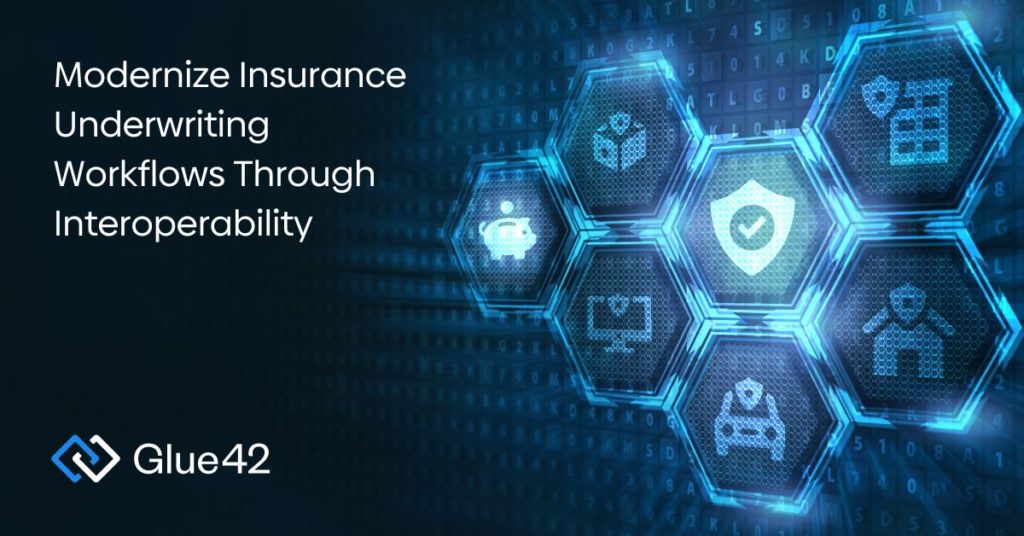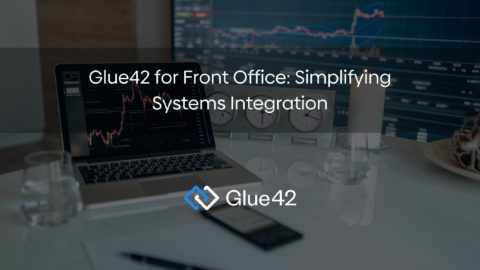
What is Workflow Modernization?
The buzzword in digital transformation over the last few months has been ‘modernization’ – in simple terms ridding the old for the new. Newer, more efficient and advanced technologies that can automate insurance underwriting workflows and processes smoothly.
Historically one wouldn’t equate the insurance world with the term modernization – they almost seem an antithesis. The industry has been known to be a slower adopter of new technology for a myriad of reasons: a chronic dependency on legacy systems, manual workflows that have cemented a mindset of ‘If it ain’t broke, don’t fix it’, regulation and whether real or perceived, concerns about the complexity, time and cost of implementing new technologies … to name a few. Though one can argue in favor of these justifications, one cannot argue against the fact that we are in a new era where the push toward modernization is becoming unavoidable. The early adopters of modern frameworks and technologies will not be seen as guinea pigs but instead as trendsetters and gain valuable advantage over their competitors.
The modern world requires modern ways of thinking and operating; companies need to continually evolve to meet the changing needs of customers. Paper-based and legacy tech frameworks used in underwriting workflows are proving more costly than ever – Only 25% of an underwriter’s day is spent on selling and broker engagement (Denise Garth, 2021). The rest is spent on complex core processing and tasks.
Modernizing insurance underwriting will need to involve the use of advanced technology to improve the accuracy, efficiency and customer experience of the underwriting process. Some innovations that can modernize underwriting are: data analytics and machine learning, internet of things and telematics, predictive modeling, blockchain and automated underwriting business processes through interoperability to name a few.
What is Desktop Interop?
Desktop interop (short for desktop interoperability) refers to the ability for different desktop applications to work together seamlessly regardless of the underlying technology they were built on. It involves enabling software applications to communicate with each other, share data and resources, and work together to perform a specific task.
It involves the use of a common language to define how data is exchanged in order to create seamless experiences. In underwriting, the data exchanged could be a client name, a risk, a peril, a region for example.
More advanced forms of interoperability would then allow applications to interpret this data and perform specific functions on it. They could for example, update a customer address, get a unified view of the quote to bind process for said client or record a series of events from one system to the other. An interoperable desktop platform would allow the creation of cross-application workflows and workspaces, app stores, centralized notifications, global searching and more; the possibilities are endless! And this could play a crucial role in modernizing underwriting workflows in the insurance industry.
The Siloed World of Insurance Underwriting Workflows
The underwriting ‘quote to bind’ workflow process is littered with applications; from CRMs, compliance, data, risk, exposure management tools, pricing and policy admin systems. It is estimated that on average over 50% of underwriters work with 4 or more systems (Sheridan, 2013) – which adds complexity to the process and steals valuable time away from winning new business and servicing existing clients. The larger the organization, the greater the probability of an abundance of clunky legacy systems – that are still heavily relied upon to turn around a quote. Moreover, all these systems exist in silos; they perform specific functions and operate independently from each other, with little or no integration or communication between them. These siloed systems can create barriers to collaboration and communication between teams, leading to information silos and inefficient workflows. This can also result in data redundancy and inconsistency.
Modernizing Through Interop
For larger insurers, it is not uncommon to find multiple applications (that do the same thing) in operation and all required for the ‘quote to bind’ process. All these systems typically sit separately and require the mundane effort of underwriting/underwriting support teams to manually key the same information across to output whatever data is required. Desktop interoperability can allow all these systems to communicate and work seamlessly with each other, copying data across applications to remove double keying efforts as an example, thus streamlining the underwriting process, eliminating errors and delays and improving quote turnaround times.
A good desktop interop provider will be tech stack agnostic; allowing different application tools and systems to be integrated regardless of the technology underpinning them. This has the potential of opening up the world of underwriting and redefining underwriting excellence and efficiency with the ability to easily tap into myriad data sources to get better views of customer risk profiles and exposures as an example, thus leading to better underwriting decisions.
Interoperability can also enable greater collaboration and communication between underwriting teams, brokers and other stakeholders. It can be used to unify workflows and create more connected experiences that allow easier information sharing and faster, better decisions through shared collaborative insights.
Interop can transform the underwriting process – integrating legacy, in-house and third-party applications to create a one-stop shop for underwriting. Thus, re-defining the underwriting workflow process and removing common pain points such as double keying, swivel chairing, and skills silos to name but a few. It can be used to create workflows that ease cross-team collaboration, therefore, driving efficiency and the ability to win business.
Find out more about how interop can be used to transform insurance here: Glue42 for Insurance.


